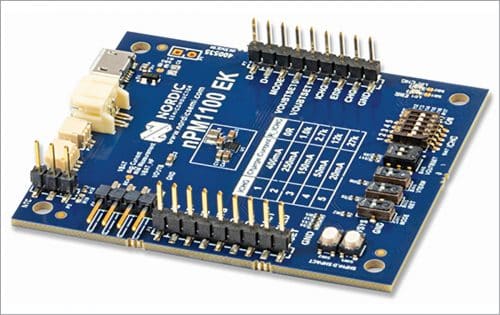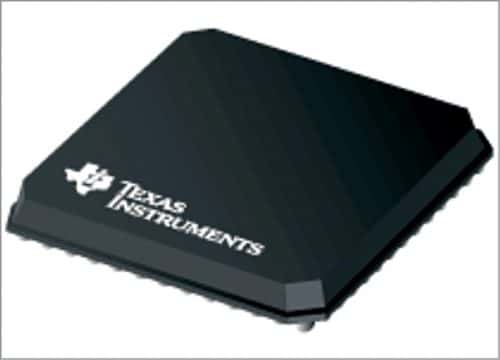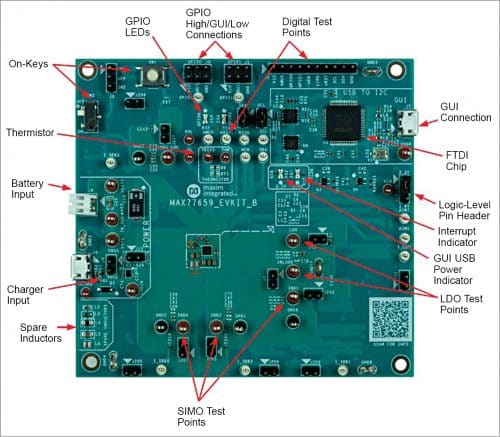With increasing product specifications, power management solutions are also upgrading. The article discusses major innovations seen in power management ICs in last one year.
Power management plays a critical role in terms of efficiency of the device, be it an automotive high-voltage power converter or an ultra-low-power wireless sensor network. With an increase in demand for proper power management, many companies are looking at manufacturing customised integrated chips (ICs). Let us have a look at some new features that have emerged in the power management integrated chips (PMICs) launched in last one year.
Multiple outputs
Recently-launched power management solutions feature multiple outputs employing DC-DC converters and low dropouts (LDOs). Industrial applications require multi-channel outputs for multiple distinct peripherals in a system. For example, a battery-powered IoT system might need multiple voltage rails of different voltage levels for powering sensors, onboard MCUs, voltage regulators, battery charger ICs, etc. Some power rails may require high voltage accuracy and low noise, like voltage references. This high-accuracy voltage is usually supplied by low-noise, high-PSRR (power supply rejection ratio) LDOs integrated within the PMICs.
Maxim Integrated’s MAX2520 features three DC-DC converters and a high-PSRR LDO intended for camera applications. The first output is from a high-voltage step-down converter, which steps down the voltage from a car battery. The other two outputs are from a low-voltage step-down converter, and the fourth output is from a high-PSRR LDO for powering the imager.
NXP Semiconductor’s VR5510 PMIC built for infotainment applications has three low-voltage buck converters, a boost converter, three LDOs, and a high-voltage LDO.
Texas Instruments (TI) TPS65921 integrated power management system, designed to power peripherals of multimedia processors, features three step-down converters and four general-purpose LDOs. TI’s TPS65951, built for mobile phones, features three step-down converters and ten external LDOs for clocks and peripherals.
Programmable output voltage
Adjustable outputs in PMICs provide flexibility to design engineers in creating their own integrated system. Customised devices can benefit a lot from PMICs’ multiple programmable outputs. Integrated switching FETs or software control the output voltages depending on the product.
TI’s TPS658643 advanced power management IC is designed for handheld applications, integrating multiple regulated power supplies, system management, and display functions in a small package. It consists of three programmable step-down converters and eleven programmable general-purpose LDOs.
Moreover, TPS6521845 and TPS6521835 from TI feature three adjustable step-down converters, one adjustable buck-boost converter, two low-quiescent current, high-efficiency step-down converters for battery backup domain, and an adjustable general-purpose LDO. They are built for battery-powered portable systems as well as 5V non-portable systems.
[signinlocker id=”87626″]ROHM Semiconductor BM81810MUF-ME2 and BM81810MUV-M allow voltage selection via the I2C interface.
Integrated battery charging
Battery-powered devices use PMICs available with integrated battery chargers. Most portable and compact integrated systems are powered by Li-ion/Li-po batteries. A dedicated 2-stage or 3-stage charging system along with a battery monitoring system for battery management is required for such batteries.
Recently launched Nordic Semiconductor’s nPM1100, as shown in Fig. 1, comes with an integrated battery charger that can charge both Li-ion and Li-po batteries. It can detect USB port voltage and accordingly power the load. The PMIC aims to maximise the battery life through high efficiency and low quiescent currents.

TI’s TPS65951, seen in Fig. 2, also features a Li-ion, Li-po, and cobalt-nickel-manganese charger as it is built for cellular handsets.

Maxim Integrated’s MAX77659 features a battery charger with programmable battery regulation voltage, wide current range, and fast-charging current. This flexibility allows the user to integrate batteries according to their design convenience.

Application-based features
Latest PMICs provide additional support for peripherals according to their respective applications. Apart from this, some PMICs also present new application-specific features, like MAX2520 and VR5510.
Maxim Integrated’s MAX2520, intended for camera applications, features a soft-start for a smooth transient response. It also supports high-frequency operation for improved noise immunity and load-transient response.
NXP’s VR5510, designed for gateway, advanced driver assistance systems (ADAS), vehicle-to-everything (V2X), and infotainment applications, provides external frequency synchronisation on inputs and outputs for optimised system electromagnetic compatibility (EMC) performance.
TI’s TPS65921, made for multimedia processors, consists of a real-time clock (RTC), a keypad interface, and embedded power control (EPC). TI’s TPS565951 features an LED driver circuit, RTC, external vibrator, etc, as it is intended to be used in cellular handsets. Similarly, TPS658643 of TI PMIC, meant for handheld devices, provides support for dual RGB LED drivers.
Conclusion
Power management for complex integrated systems is always a challenge. Solutions to tackle this will continue to improve with time in terms of efficiency, accuracy, noise immunity, compactness, and performance. PMICs are also becoming more scalable with features like programmability, interface support, wide range of input and output voltages, and high current handling capacities.
In conclusion, we can say power management is quite an emerging technology with significant advancements happening consistently.[/signinlocker]
Darshil Patel worked as a technical journalist at EFY until recently.








